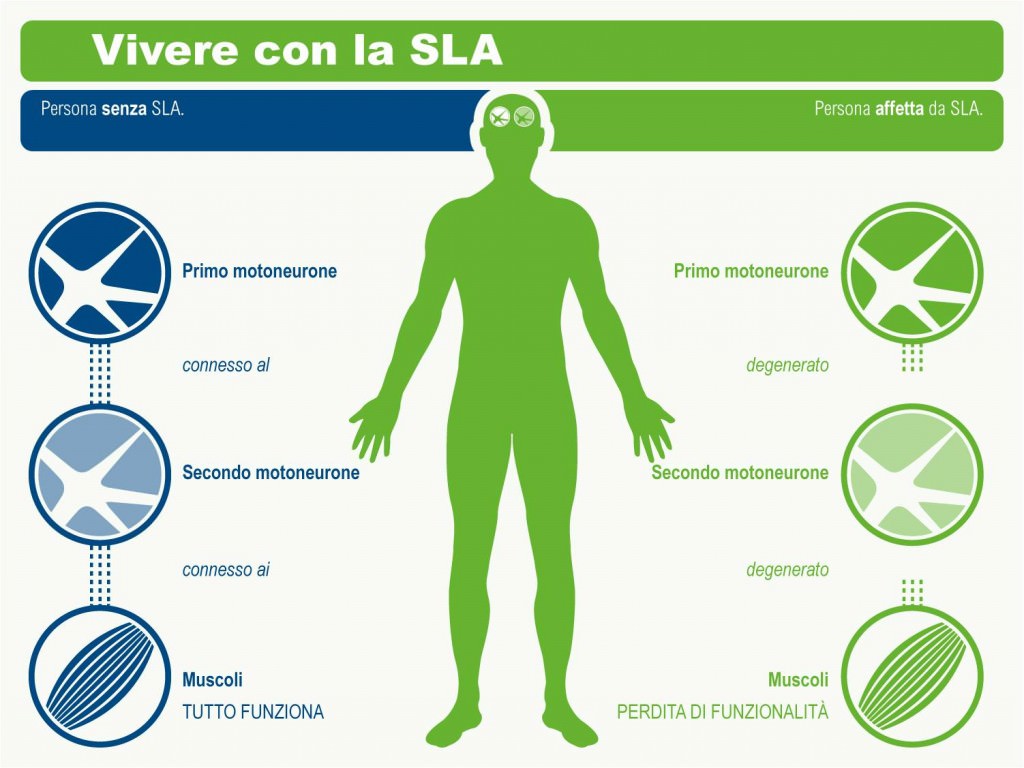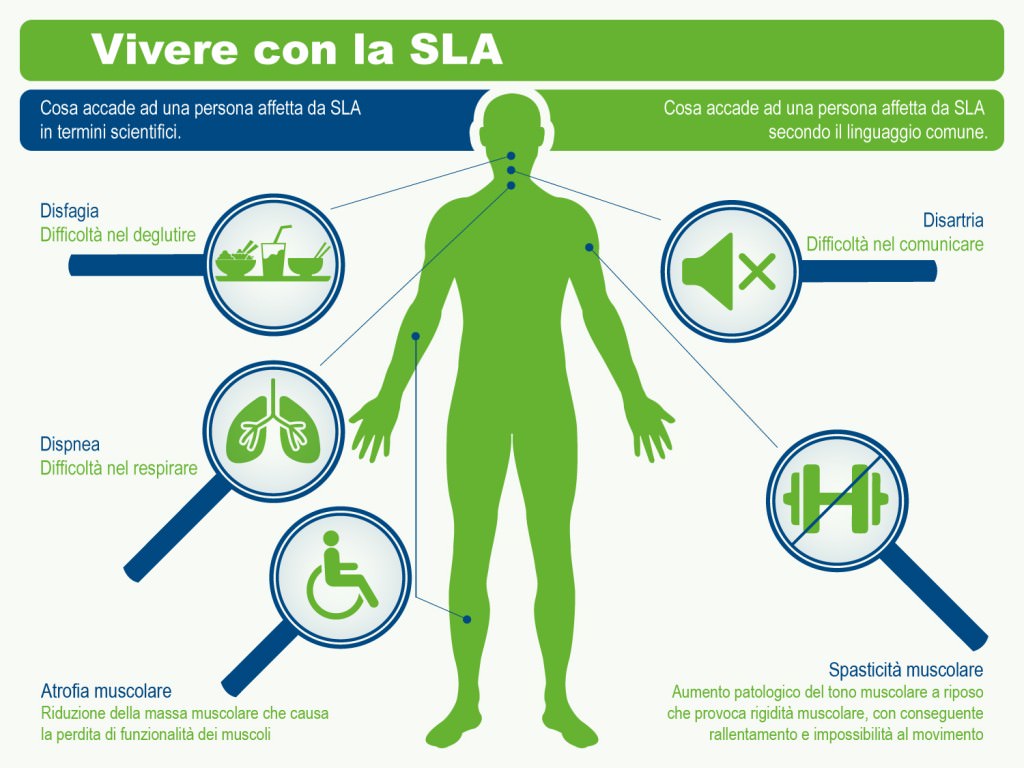"Understanding Amyotrophic Lateral Sclerosis (ALS)"
There are two groups of motor neurons: the first (upper motor neuron or cortical motor neuron) is located in the cerebral cortex and carries the nerve signal through extensions that travel from the brain to the spinal cord. The second (lower motor neuron) consists of nerve cells that transmit the signal from the brainstem and spinal cord to the muscles.
The characteristics of Amyotrophic Lateral Sclerosis (ALS).
ALS is characterised by the degeneration and eventual death of both the upper and lower motor neurons. The death of these cells occurs gradually over the course of months or even years.
The first signs of the disease appear when the progressive loss of motor neurons surpasses the compensatory capacity of the surviving motor neurons, leading to a gradual loss of muscle strength. However, in most cases, cognitive, sensory, sexual, and sphincter (bladder and bowel) functions are spared.
ALS has a particularly dramatic characteristic: while it progressively paralyses all muscles, it does not take away the ability to think or the desire to relate to others. The mind remains alert but trapped in a body that becomes increasingly immobile. However, it should be noted that in a minority of cases, there may be cognitive alterations, mostly of a mild nature, but sometimes severe enough to present a picture of frontotemporal dementia. This form of dementia is distinctly different from the more common Alzheimer’s dementia, as it is primarily characterised by changes in behaviour rather than impairment of memory or language.
Causes and incidence of ALS.
The causes of the disease are unknown, although in recent years a growing role of genetics has been recognised as a predisposing factor, which, alongside other factors (such as environmental ones), may contribute to the development of the disease.
The incidence currently stands at around 3 cases per 100,000 inhabitants per year, while the prevalence is 10 per 100,000 inhabitants in Western countries. There are currently about 6,000 patients in Italy. The disease affects both sexes, although there is a slight predominance in males.
While the incidence, which refers to the number of new cases diagnosed in a year, remains constant, the prevalence—the number of people living with this disease at a given moment—increases. This rise is mainly due to improvements in care, the overall enhancement of the patient’s quality of life, and a cultural/ethical shift regarding lifestyle choices and daily living.
Although there are areas where an excess of cases has been reported compared to what is typically expected, the occurrence of the disease is not associated with belonging to a specific geographical area.
Regarding age, the disease predominantly affects adults, with an average onset age of around 60-65 years; the incidence increases with advancing age.
The progression of Amyotrophic Lateral Sclerosis (ALS).
ALS generally progresses slowly and, with appropriate care, allows for an acceptable quality of life. The severity can vary greatly from one patient to another, as different muscles may be affected, the rate of deterioration can differ, and the extent of paralysis varies. The progression in an individual patient can only be assessed through periodic neurological check-ups (every 2-3 months). Caution is necessary when making predictions.
Typically, there is a gradual loss of movement abilities, which can lead to complete immobility. Chewing, swallowing, and the ability to speak may also be compromised. Gradually, respiratory paralysis manifests, which can only be addressed through mechanical ventilation. Even in the more advanced stages, the disease affects only the motor system and spares all other neurological functions.
ALS does not compromise the internal organs (the heart, liver, kidneys) or the five senses (sight, hearing, smell, taste, touch). The muscles that control eye movements and those of the external sphincters that retain feces in the intestines and urine in the bladder are rarely affected. Thinking, mental activities, and genital functions are preserved.

Texts and images from this page are taken from the AISLA Onlus | Italian Association for Amyotrophic Lateral Sclerosis, where you can find more detailed information on the topic.


